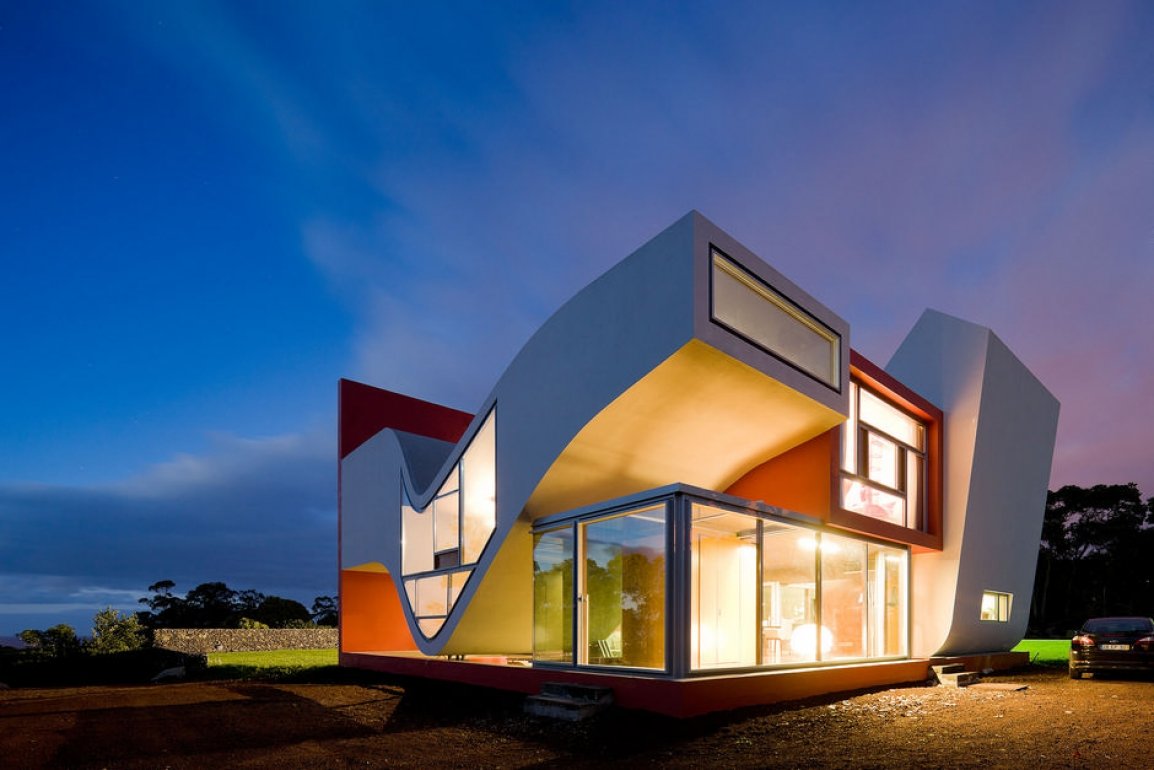#8300. Wave-like deconstructivist facade with dynamic forms and contrasting accents
This architectural object is a striking example of deconstructivism in contemporary residential architecture. The facade is characterized by dynamic, fluid forms that seem to flow into one another, creating a sense of movement and plasticity. Particularly expressive are the wave-like roofline and the curves of the exterior walls, which give the structure a sculptural quality.
The color scheme of the facade plays a key role in the perception of the object — the contrasting combination of white surfaces of the main walls with bright orange accents in the recesses and on the lower part of the building creates a dynamic composition. Large panoramic windows and glass elements provide visual lightness to the structure and excellent natural light for the interior spaces, allowing the interior to interact with the surrounding landscape.
The asymmetrical arrangement of window openings of different sizes and shapes emphasizes the non-linear nature of the architecture. The volume of the building appears to float above the ground due to protruding elements and cantilevers, which enhances the overall impression of weightlessness and futuristic design.
For private housing, such an approach to facade design can be adapted through the use of more restrained curvilinear elements, accent color inserts, and playful geometry of window openings. Even with a more modest budget, it's possible to create an expressive facade by applying asymmetry, contrasting materials, and thoughtful lighting.
